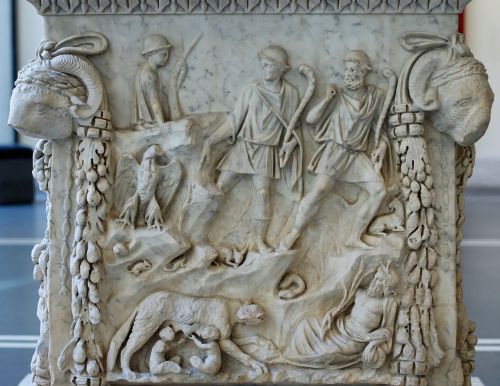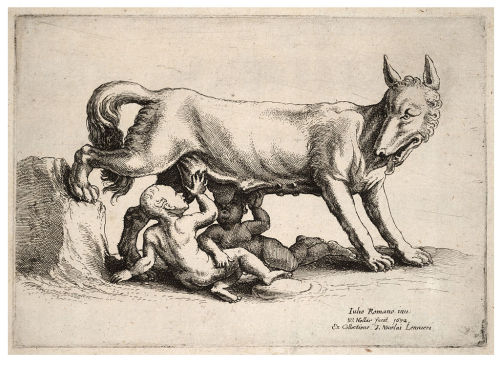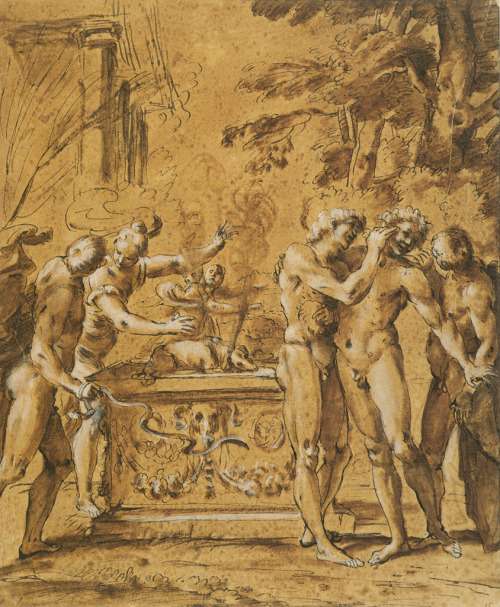Why February 13th is BRILLIANTRunning With WolvesToday is the first day of the three day Roman festi
Why February 13th is BRILLIANTRunning With WolvesToday is the first day of the three day Roman festival of Lupercalia. It is a very ancient festival that dates back to the founding of Rome, some time around 753 BC. Possibly even further. It was pretty popular up until the end of the fifth century, when it was banned by the Pope. As that means it was celebrated for around 1200 years, it’s not so easy to get to the bottom of what it was all about. We don’t know which god, if any, they were honouring but we do know that the Romans really liked it. We also know that it involved lots of naked, drunk, oiled-up noblemen running around the city.Back in the eighth century BC, February was the last month of the year, not the second. The calendar began in March, not January. So it seems likely that is was once a festival connected with the start of a new year. The Roman historian Plutarch, writing at the end of the first century, thought that the festival had its origins among shepherds and that it had probably had something to do with the Greek festival, Lykaia. The names of both festivals are related to the Roman and Greek words for ‘wolf’.The celebrations began, in a private ceremony, in a cave beneath the Palatine Hill called the Lupercal. Traditionally, it was the place where infants Romulus and Remus, the founders of Rome, were found being suckled by a she-wolf. The Lupercalia began with a ritual performed by two groups of priests, collectively known as the Luperci, the brothers of the wolf. The Quinctilii, who were descended from the followers of Romulus and the Fabii, who were descended from the followers of Remus. They would sacrifice a goat, perhaps two goats, and maybe a dog as well. Two young men would be chosen, one from each priesthood, to represent the city’s founders. They would have their foreheads smeared with blood from the sacrificial knife. This would be immediately wiped off with sheep’s wool dipped in milk. The two men were then both expected to laugh loudly. It’s hard to say what this meant, but perhaps the blood represented death, as in the old year, and the milk, the birth of a new one.After that, they would make a feast of their sacrifice accompanied by plenty of wine. If this was all there was to Lupercalia, it would be a pretty normal occasion. But it wasn’t. They then cut the skins of the animals into strips and fashioned themselves whips. Next, they took off all their clothes and, perhaps wearing masks, set off out into the city. They ran right around the walls of the Palatine, the hill in the centre of Rome where the city was traditionally founded. As they went, they used their strips of animal hide to whip the spectators. Specifically the women. To be whipped by one of the Luperci was thought to bring fertility or, to those who were already pregnant, easy childbirth.The Luperci came from noble families. We know that in 44BC, Mark Anthony ran with them. He was part of a new group of priests introduced to the ceremony by Julius Caesar called the Julii. Clearly by creating a sect named after himself, he was equating himself with the founders of Rome. It didn’t go down to well, and a month later he was murdered. Cicero describes Mark Anthony as: “nudus, unctus, ebrius”, naked, oiled, drunk. Plutarch thought that the reason the participants were naked was to help them run faster, maybe the oil was supposed to help with that too.By the fifth century, the celebrations had degraded somewhat. Nobility no longer took part. They left it to 'the rabble’. They must have still enjoyed the spectacle though, because the Senate really didn’t want to see it go. But the Pope told them that if they really wanted it, then they should take part and be prepared to run around naked themselves. It was outlawed in the 490s.Many have suggested that our Valentine’s Day has its origins in the feast of Lupercalia. This is probably not the case. Some will tell you that part of the festival involved girls writing their names on strips of paper to be put in a vessel and drawn out by young men. That they would be paired off for the rest of the festival. This appears to have been made up by Alban Butler in 1756. It definitely has everything to do with wolves though. The Greek festival, Lykaia, which may be the origin of the Lupercalia, took place every nine years and involved human sacrifice. There was a feast where a single piece of human entrails was mixed up with those of an animal. Whoever ate it would be turned into a wolf by Zeus. If they could restrain themselves from eating human flesh before the next Lykaia, nine years later, they would become human again. If not, they would remain a wolf forever. -- source link
#february 13th#whytodayisbrilliant#lupercalia#ancient rome#wolves#werewolves


